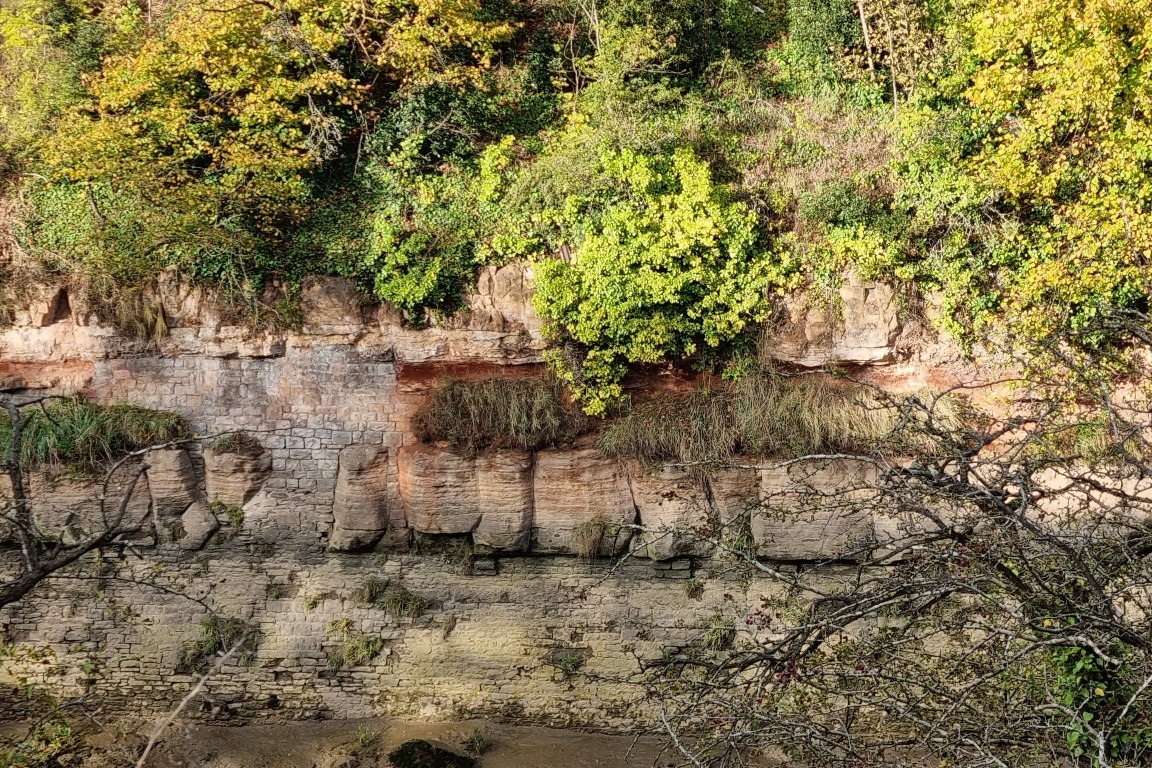The rock opposite is a fine-gained Triassic sandstone, cut away to create the channel for the River Avon.
It was formed in the desert conditions of the Triassic period when eroded sand was transported by rivers or flash floods or the wind from its source areas to lakes where it would settle, become compacted in gently arched beds and eventually turn into stone (a process called lithification).
So it is approximately 200-250 million years old from a time when early dinosaurs began to scamper about. In those days this region was 15 degrees north of the equator.
Sandstones are composed of fine to medium sized grains of calcium carbonate and of iron oxide (haematite) which gives it its red colour; so it’s also known as Redcliffe sandstone and gives rise to intensely red sandy soils locally and so to other Bristol place names such as Redland and Redfield.
Because the sand grains in this part of Bristol were weakly ‘cemented’, the stone was easily worked for local industries, manufacturing glass and pottery; but perhaps it was not so good for building materials: the weathered outer wall of the tannery on Coronation Road is an example.
Under the sandstone are the Coal Measures which were mined in Bedminster and Ashton. These contain the fossil remains of a tropical rain forest which flourished about 200 million years ago in the Carboniferous Period.
Sources: Wildlife and Geology of the Bristol Region; 5, published by Bristol REgional Environmental REcords Centre (BRERC), 2018.
Wikipedia: Bunter sandstone
